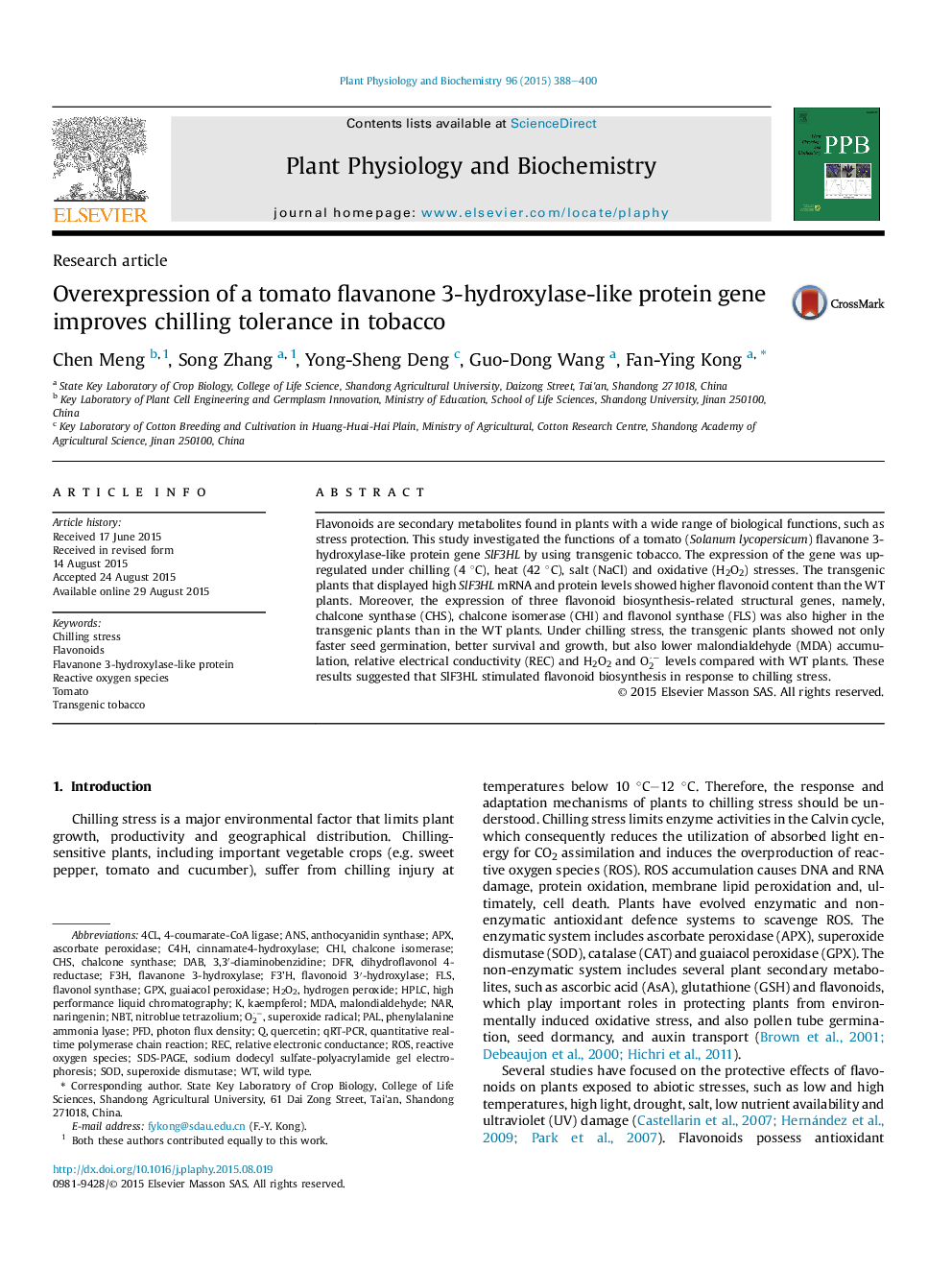| Article ID | Journal | Published Year | Pages | File Type |
|---|---|---|---|---|
| 8354795 | Plant Physiology and Biochemistry | 2015 | 13 Pages |
Abstract
Flavonoids are secondary metabolites found in plants with a wide range of biological functions, such as stress protection. This study investigated the functions of a tomato (Solanum lycopersicum) flavanone 3-hydroxylase-like protein gene SlF3HL by using transgenic tobacco. The expression of the gene was up-regulated under chilling (4 °C), heat (42 °C), salt (NaCl) and oxidative (H2O2) stresses. The transgenic plants that displayed high SlF3HL mRNA and protein levels showed higher flavonoid content than the WT plants. Moreover, the expression of three flavonoid biosynthesis-related structural genes, namely, chalcone synthase (CHS), chalcone isomerase (CHI) and flavonol synthase (FLS) was also higher in the transgenic plants than in the WT plants. Under chilling stress, the transgenic plants showed not only faster seed germination, better survival and growth, but also lower malondialdehyde (MDA) accumulation, relative electrical conductivity (REC) and H2O2 and O2·â levels compared with WT plants. These results suggested that SlF3HL stimulated flavonoid biosynthesis in response to chilling stress.
Keywords
qRT-PCRDFRPALGPXC4HPFDNBTF3HCHSAPXCHIFLSNAR4CL4-coumarate-CoA ligaserecMDADAB3,3′-diaminobenzidineflavonoid 3′-hydroxylaseO2·−ROSnitroblue tetrazoliumHydrogen peroxideChilling stresssodium dodecyl sulfate-polyacrylamide gel electrophoresisSDS-PAGEphoton flux densityTransgenic tobaccodihydroflavonol 4-reductasesuperoxide radicalANSSODanthocyanidin synthasechalcone synthaseSuperoxide dismutaseFlavonoidsflavonol synthaseflavanone 3-hydroxylasePhenylalanine ammonia lyasemalondialdehydeNaringeninwild typeH2O2quantitative real-time polymerase chain reactionascorbate peroxidaseKaempferolhigh performance liquid chromatographyHPLCchalcone isomeraseQuercetinguaiacol peroxidaseTomatoReactive oxygen species
Related Topics
Life Sciences
Agricultural and Biological Sciences
Plant Science
Authors
Chen Meng, Song Zhang, Yong-Sheng Deng, Guo-Dong Wang, Fan-Ying Kong,
